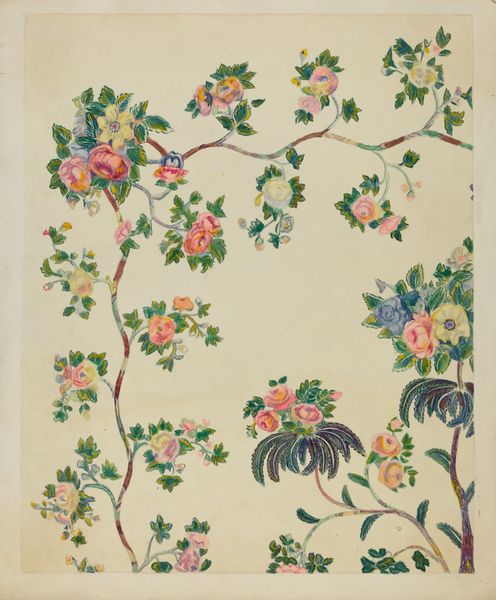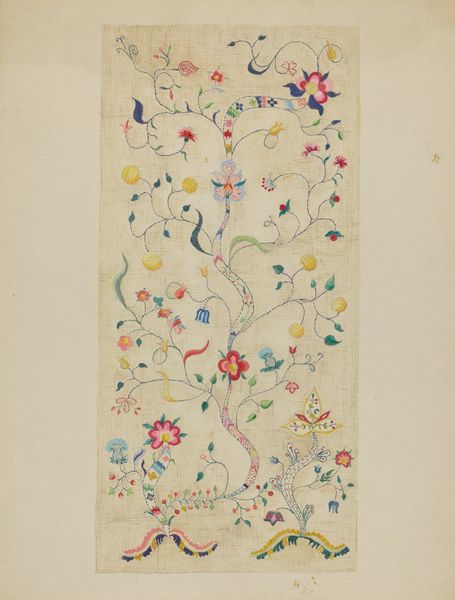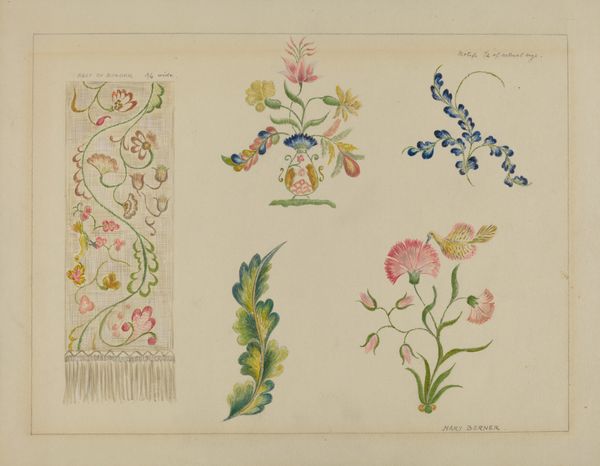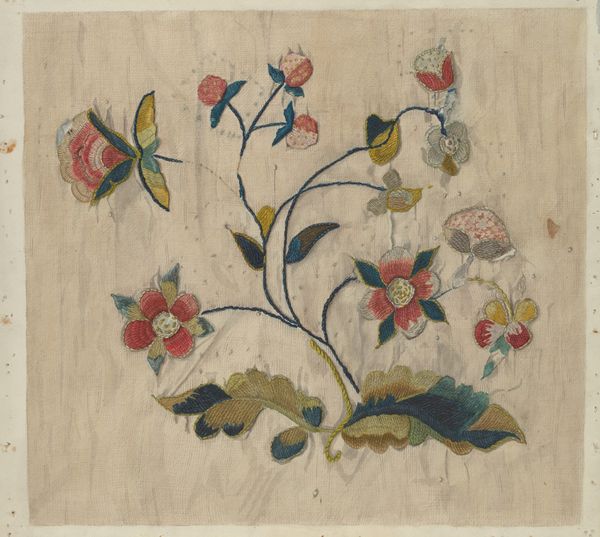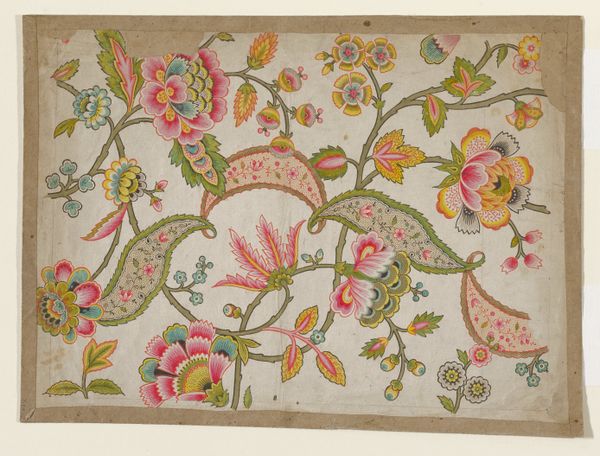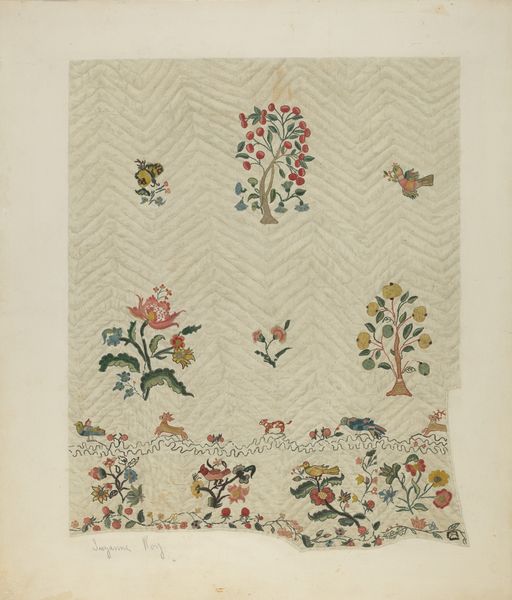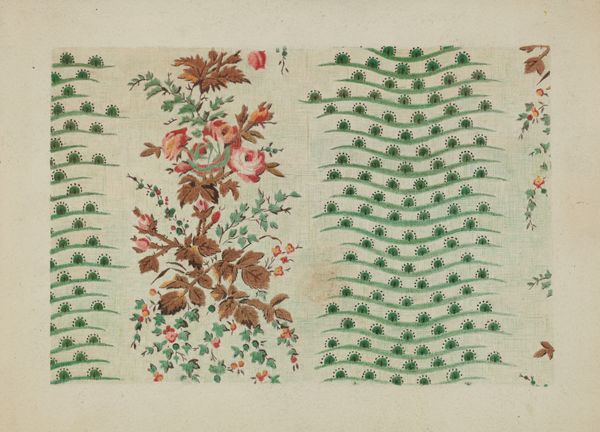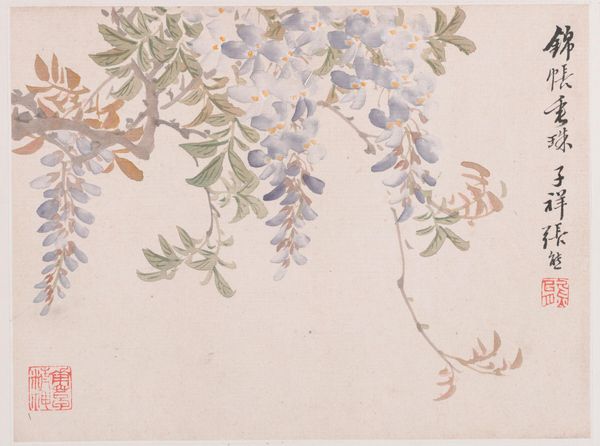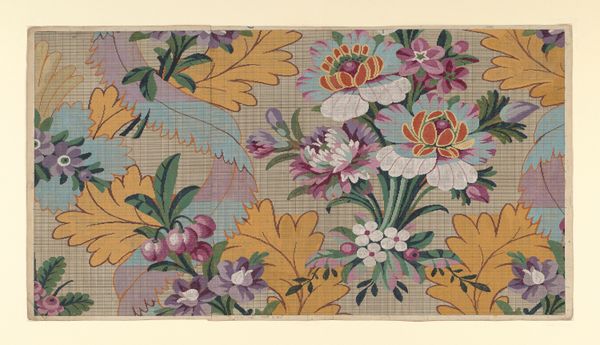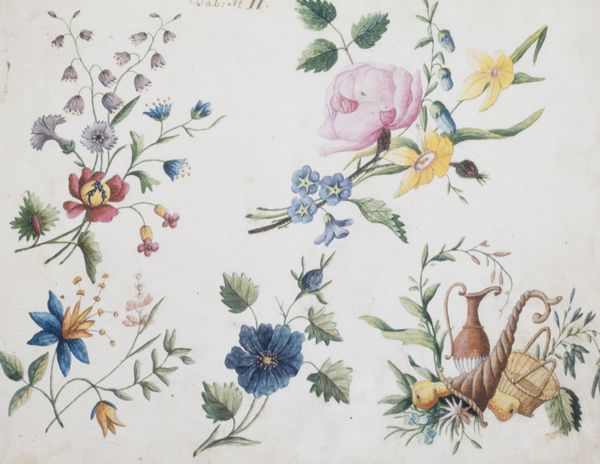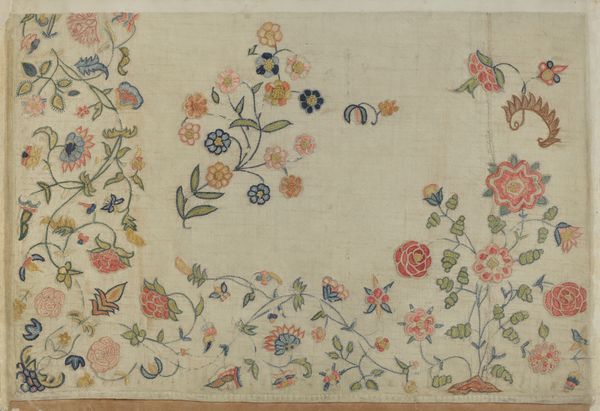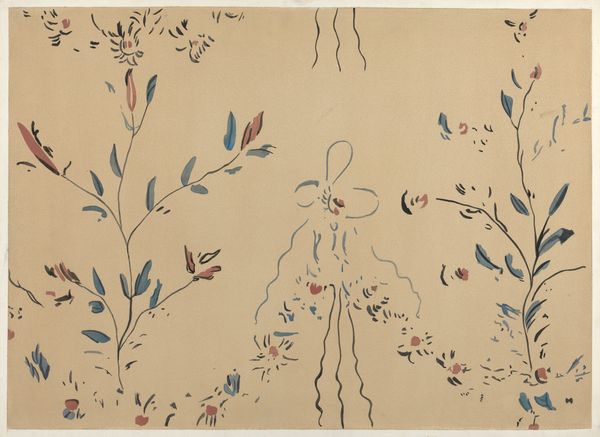
Dimensions: overall: 29.8 x 22.9 cm (11 3/4 x 9 in.) Original IAD Object: 46" long; 6" wide
Copyright: National Gallery of Art: CC0 1.0
Editor: This artwork, titled "Border or Valance," created around 1936 by Fanchon Larzelere, is a watercolor drawing for a textile design. I’m struck by its delicate and almost whimsical quality. What symbols or deeper meanings do you see within these floral and bird motifs? Curator: It's fascinating how recurring images of birds and blossoming flora weave their way through cultures. What seems decorative here carries echoes of paradise gardens and ideas of renewal. Birds often signify the soul, freedom, or divine messengers. The question here is: are these emblems consciously employed, or is Larzelere tapping into a broader, perhaps unconscious, symbolic vocabulary? What feeling do the bird motifs evoke in you? Editor: I hadn't considered the birds as symbolic beyond just being decorative. They make me think of spring, of something light and hopeful, though. Curator: Indeed! And what of the arrangement? Notice how each band presents a slightly different iteration. Do you perceive a narrative, or perhaps variations on a theme of nature’s abundance? Editor: I see a variation of nature's abundance as you suggested. It does raise the question whether they are simply aesthetic arrangements for a textile design, or whether the repetition, even with slight variations, points to a deeper commentary. It makes me think that this could reflect the interconnectedness and perpetual change within ecosystems. What I am trying to get to is, could that be considered commentary? Curator: Precisely! By drawing upon motifs resonant across history, an artist creates a dialogue not only with nature but also with the collective visual memory of their audience. Editor: This conversation has highlighted for me how symbols embedded in visual culture carry such weight, resonating far beyond mere surface aesthetics. Curator: Absolutely. The emotional impact is cumulative, passed on through generations. Art creates a sense of cultural continuity.
Comments
No comments
Be the first to comment and join the conversation on the ultimate creative platform.
